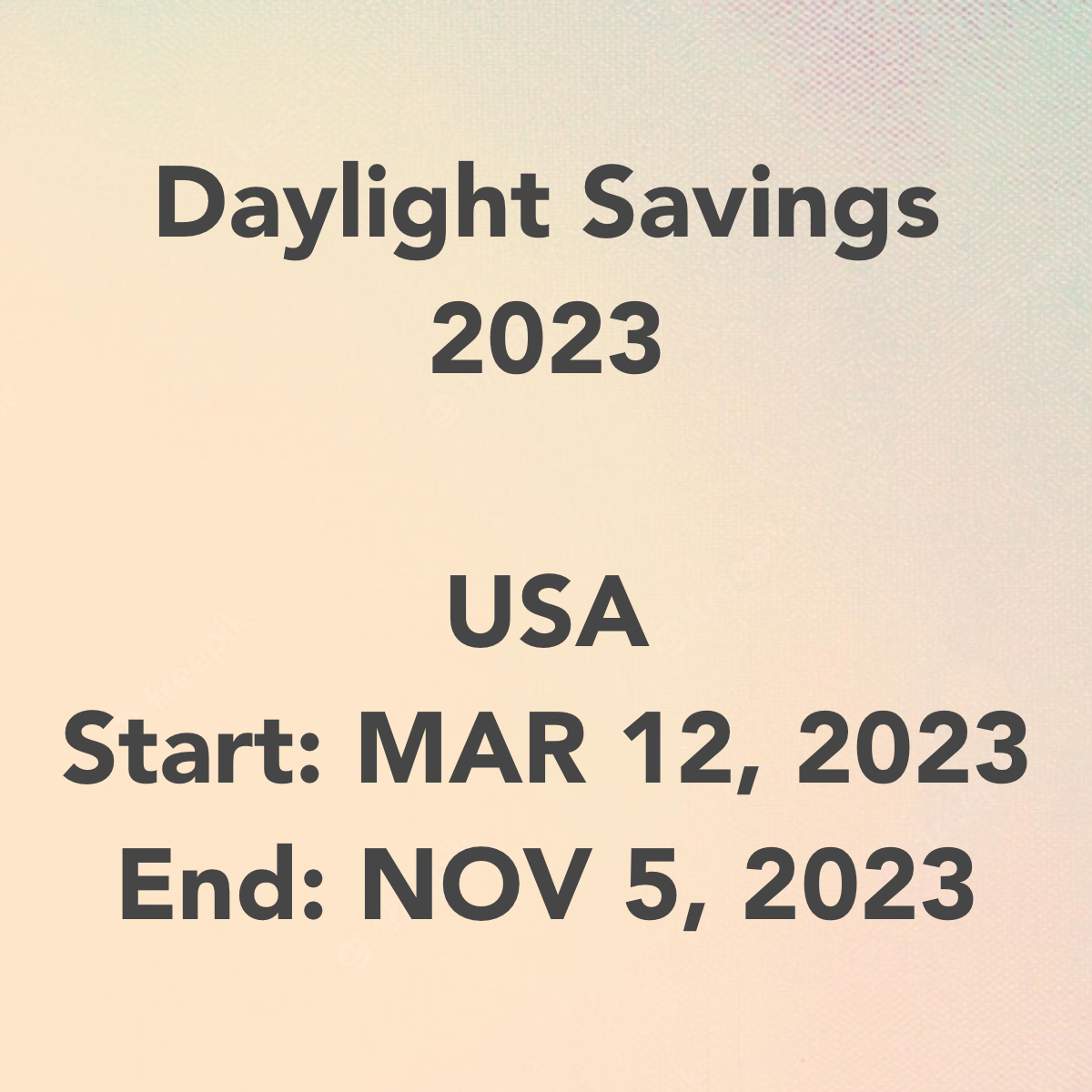
07 Aug Daylight Saving 2023
Daylight Saving 2023
United States
START: Sunday, March 12, 2023
END: Sunday, November 5, 2023
Daylight Saving Time in 2023
In 2023, the daylight saving time schedule remained relatively consistent for most countries that observe it.
In the United States, for example, DST started on Sunday, March 12, and will end on Sunday, November 5.
The European Union’s DST began on the last Sunday of March, which was March 26 in 2023, and will end on the last Sunday of October, October 29.
Meanwhile, Southern Hemisphere countries that observe DST, such as New Zealand and parts of Australia, operate on a different schedule due to their reverse seasons. In 2023, New Zealand began DST on the last Sunday of September (September 24) and ended it on the first Sunday of April (April 2).
In 2023, daylight saving time (DST) continues to be a pervasive part of life in many countries around the world, serving as an annual adjustment of time that aims to make better use of daylight and conserve energy. Despite the persisting debates about its relevance and impact on modern societies, it remains a complex, multifaceted subject worth understanding.
The Concept of Daylight Saving Time
Daylight saving time is a system designed to extend evening daylight by setting clocks ahead by one hour from Standard Time during the warmer part of the year, thereby reducing the need for artificial lighting. This shift typically happens in the spring and is reversed in the fall. The concept was first proposed by George Vernon Hudson in 1895, but it was not widely adopted until World War I as an effort to conserve coal. Today, DST is used in over 70 countries worldwide, affecting the lives of billions of people.
Controversies and Debates
While DST continues to be widely observed, it is not without controversy. The primary debates revolve around its effects on energy conservation, public health, and the economy. While the initial intent of DST was to save energy, modern studies have cast doubt on its efficacy in this area. Some studies even suggest it might increase energy consumption due to increased demand for air conditioning on hot evenings and heating on cool mornings.
Additionally, there are health concerns tied to the disruption of circadian rhythms caused by DST. Sleep loss and changes in the sleep cycle can lead to reduced productivity, increased risks of accidents, and in some cases, negative health impacts such as heart problems.
As for the economy, while some industries like retail and sports benefit from extra daylight, others like entertainment and farming can be negatively impacted.
Recent Changes and Looking Forward
In recent years, there have been increasing movements against the observance of DST. For instance, a number of US states have proposed legislation to abolish DST or make it permanent, which would require a change in federal law. In the European Union, a large-scale public survey in 2018 led to a proposal to end the biannual clock changes, though as of 2023, no final decision has been made.
While the future of DST remains uncertain, what is clear is that its implications extend far beyond the mere adjustment of clocks. As societies continue to weigh the advantages and disadvantages, DST may see significant changes in the years to come. It is essential to stay informed about the topic and consider its potential impacts on our daily lives. For now, though, the ritual of “springing forward” an hour in the warmer months and “falling back” in the cooler ones remains a part of our annual rhythm in many parts of the world.




